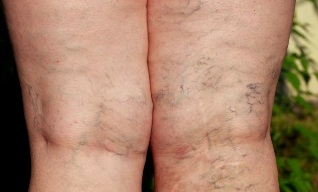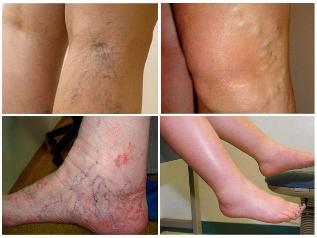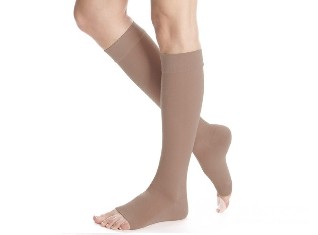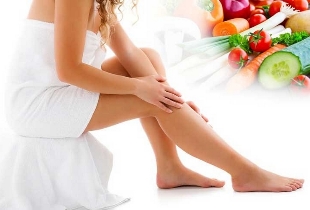Varicose veins of the lower extremities is a chronic venous disease, which is characterized by the thinning of their walls, the extension of the light and the formation of aneurysm-sicut nodes. Most often, the varicose disease affects the lower limbs, is one of the most frequent diseases – which affect 40% of women and 20% men.

Causes and risk factors
Through the veins of the lower extremities blood flows upwards, that is to say, must overcome the force of gravity. This current is provided by a pressure close to the veins and tendons of the residual arterial pressure. The movement of the blood through the veins of the lower limbs and promotes a "muscle pump": when moving, the muscles of the legs contract and compress your veins, placebat ei pulsare for both are found in the blood, because the reverse current inhibit venous valves.
The weakness of the muscle layer of the wall vein and the incompetence valvular be the reason that influenced the actions of the "pump muscle" the blood begins to flow in the opposite direction, that is to say, down. This leads to an increase of pressure on the walls of blood vessels, in addition to the progression of the disease of the valve, the enlargement of the light veins and nodules. The muscle fibers of the vein walls atrophy, disrupted nerve receptors that regulate venous tone, which in turn increases even more the manifestations of the venous insufficiency.
Risk Factors for the development of varicose disease of lower limbs:
- the genetic predisposition;
- pregnancy;
- obesity;
- journal of prolonged sitting or standing;
- activities related to the heavy work;
- systematic use of tight clothing, corsets;
- improper diet with inadequate intake of fibre and vitamins;
- violations of hormonal status.
In the prevention of varicose veins plays an important role in active hobbies: sports (swimming, Cycling, fitness), dancing, Excursions, etc.
Forms of the disease
In terms of the characteristics of clinical manifestations, there are the following forms of varicose veins of the lower limbs:
- segmental lesions in the intradermal and subdermal veins without reverse flow;
- segmental lesion of the veins of the lower limbs, accompanied by abnormal flow of blood;
- common in vessels with reversed flow of blood in the veins surface;
- common vascular lesions, accompanied by abnormal discharge of blood in the deep venous system.

The stage of the disease
In 2000, the Russian phlebologists was adopted the classification of varicose veins of the lower extremities, taking into account the form of the disease, the degree of venous insufficiency, presence or absence of complications. In accordance with this, there are three stages of varicose disease of lower limbs:
- The compensation stage. The patients do not show any complaint. During the inspection, one or two legs, it is possible to detect superficial dilated veins.
- The stage subcompensation. Patients complain of night cramps, skin disorder, feeling (paresthesias) in the legs, sensation of swelling. At night there is often swelling of the legs, ankles and feet, disappeared after a night's sleep. During the inspection of the feet clearly visible, dilated varicose veins.
- Phase of decompensation. In the above signs be joined to eczema and dermatitis. Skin with pigment spots, dry, bright, and well connected with subcutaneous fat.
Symptoms
The clinical picture is varicose veins of the lower extremities is determined by the stage of the disease. Therefore, when the compensated stage the only symptom of venous insufficiency is the appearance on the legs spider veins (telangiectasias).
The transition of the disease in subcompensated stage is accompanied by pain in the legs, swelling of feet and ankles, cramps in the calf muscles. After resting in the horizontal position, these symptoms cease.
More clearly the clinical picture is varicose veins of the lower extremities is manifested in a phase of the disease. Foot pain to be permanent. The patients complain of itching of the skin, which intensifies in the evening and night hours. With the time, there are dermatitis, eczema, difficult healing of the sores. On the stage are frequent the most common symptoms: dizziness, low blood pressure. Are associated with the deposition in the expanded network venous of the legs of large volumes of blood.
The complication of varicose veins is phlebitis, thrombophlebitis, bleeding from varicose veins, ulcers, pulmonary embolism.
Diagnosis
Diagnosis of varicose veins of the lower extremities is not difficult. It is based on the characteristic clinical symptoms and the data of objective inspection.
To assess the severity of hemodynamic disorders apply the instrumental methods of diagnosis:
- Doppler ultrasound of lower limb veins;
- duplex angioscanning;
- rheovasography of the lower limb veins.

Treatment
In the treatment of varicose veins disease of the lower extremities according to the testimony of the following ways, or combination:
- conservative therapy;
- sclerosing therapy;
- the surgery.
Conservative therapy of varicose disease of the lower extremities may be recommended in patients in the early stages of the disease, has as its objective the prevention of the progression of the venous insufficiency chronic. It is also used when subcompensated and decompensated stages of the disease during the period of preparation of the patient for a surgical intervention or in cases when other methods are contraindicated. Conservative treatment of varicose veins, based on the use of phlebotonics, using compression hosiery. In addition, patients are invited to participate regularly in the physical therapy, to avoid prolonged loads of static.
Varicose veins of the lower extremities is not complicated by significant hemodynamic disturbance, can be used for compression sclerotherapy. The method consists in the realization in the affected vein drug, causing its spasm. After that the leg wear stockings of compression or bandaging, exercise the legs with a bandage elastic to keep the wall of the vein dormientes condition. After a few days starts the process of pasting the walls of the vein. A compression garment must be worn after sclerotherapy at least six weeks, until the formation between the walls of the veins more dense adhesions.
In advanced stages of varicose veins disease of the lower extremities is the most effective method of surgery. Techniques operating techniques are selected on the basis of the stage of the disease, its forms, characteristics of hemodynamic disorders:
- laser coagulation;
- radiofrequency coagulation;
- miniphlebectomy;
- phlebectomy.
Possible complications and consequences
Complications of varicose veins develop mainly in the phase of decompensation. These include:
- phlebitis (inflammation of veins extended);
- thrombophlebitis (inflammation of vein with formation in the lumen of blood clots);
- bleeding of varicose veins;
- sores;
- pulmonary embolism (PE).
Most often, the varicose disease affects the lower limbs, is one of the most frequent diseases – which affect 40% of women and 20% men.

Forecast
The prognosis of varicose veins of the lower extremities with timely treatment favorable.
Prevention
To prevent the varicose veins of the lower limbs is necessary to prevent prolonged loads of static. If the job requires a long stay in a standing position or sitting, you must make pauses regular for small exercises or at least walking. After the working day it is recommended to go to sleep, giving the feet a horizontal or elevated position.
In the prevention of varicose veins plays an important role in active hobbies: sports (swimming, Cycling, fitness), dancing, Excursions, etc.




































